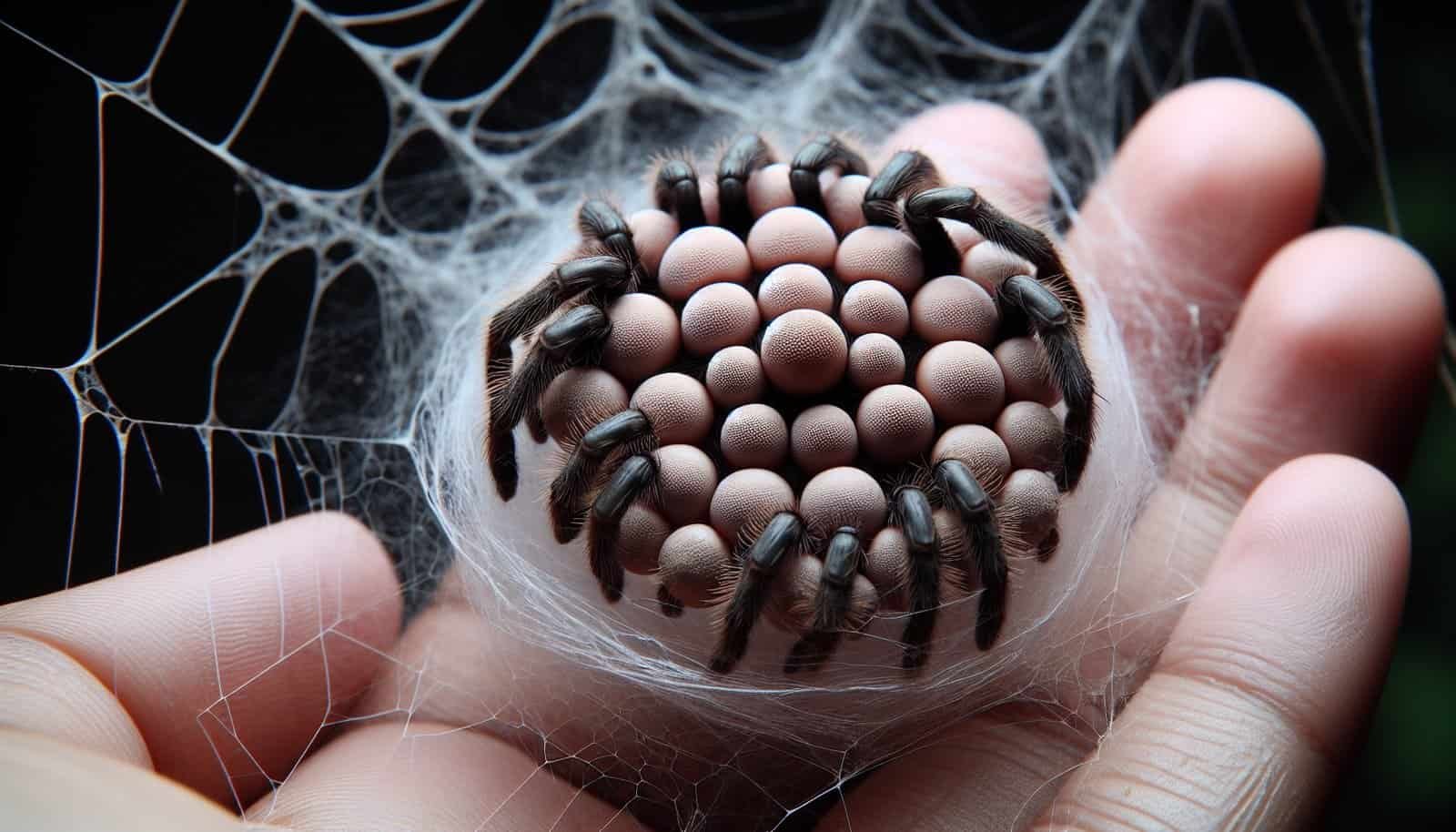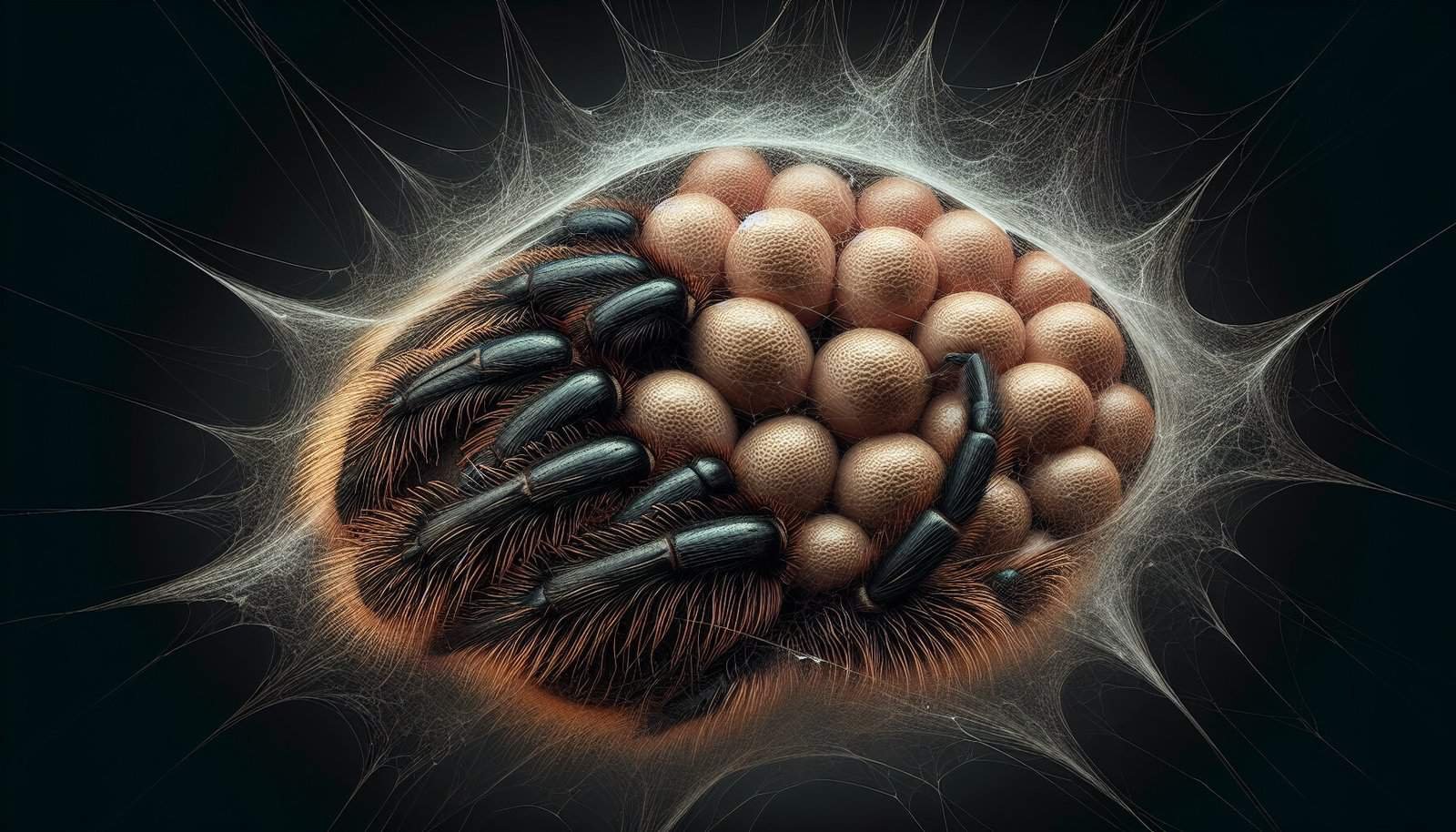Have you ever wondered how long it takes for tarantula eggs to hatch? Well, look no further! In this article, we will explore the expected hatching time for tarantula eggs. From the moment they are laid to the exciting moment when tiny spiders emerge, we will delve into the fascinating world of tarantula reproduction. So, grab a cup of tea and get ready to uncover the secrets of these eight-legged creatures!

Factors Affecting Hatching Time
Temperature
One of the key factors that affect hatching time for tarantula eggs is temperature. Tarantula eggs require a specific temperature range in order to develop and eventually hatch. Generally, a temperature range of 75 to 85 degrees Fahrenheit (24 to 29 degrees Celsius) is ideal for most species of tarantulas.
If the temperature is too low, the development process may be significantly delayed and the eggs may take a longer time to hatch. On the other hand, if the temperature is too high, it can potentially harm the developing embryos and lead to unsuccessful hatching.
Humidity
Another important factor that can impact the hatching time of tarantula eggs is humidity. Tarantula eggs require a relatively high level of humidity in order to develop properly. The ideal humidity range for tarantula eggs is typically between 70% to 90%.
Insufficient humidity can potentially cause the eggs to dry out and hinder their development. On the other hand, excessive humidity may lead to fungal growth and negatively affect the eggs. Maintaining the right levels of humidity is crucial to ensure successful hatching.
Species
Each tarantula species has its own unique biological characteristics and requirements, including hatching time. The hatching time can vary greatly depending on the species in question. Some species may have a relatively short hatching time of a few weeks, while others may take several months.
It’s important for tarantula keepers to familiarize themselves with the specific hatching time for the species they are breeding or caring for. This information can usually be obtained through reputable sources or by consulting experienced breeders.
Egg Sac Conditions
The condition of the egg sac itself can also impact hatching time. A healthy and properly maintained egg sac is more likely to result in successful hatching. Factors such as the size, color, and structural integrity of the egg sac can provide insights into the development of the eggs.
It is essential to ensure that the egg sac is undisturbed and protected from any potential harm or stress. Any damage to the egg sac can lead to complications and may prolong the hatching process.
Incubation Method
The incubation method employed can also influence hatching time. While some tarantula keepers prefer natural incubation where the egg sac is left undisturbed with the mother, others opt for artificial incubation methods.
Artificial incubation involves removing the egg sac from the mother and placing it in a controlled environment such as an incubator. This method allows for greater control over factors such as temperature and humidity, potentially leading to more predictable hatching times.
Average Hatching Time for Different Tarantula Species
Brachypelma Albopilosum
The Brachypelma Albopilosum, also known as the Honduran Curly Hair tarantula, typically has an average hatching time of about 45 to 60 days. This species is known for its relatively short hatching period, making it highly sought after among tarantula enthusiasts.
Grammostola Rosea
The Grammostola Rosea, or Chilean Rose tarantula, has a longer average hatching time compared to the Brachypelma Albopilosum. It usually takes around 60 to 90 days for the eggs of this species to hatch. Patience is key when breeding this particular tarantula species.
Aphonopelma Chalcodes
The Aphonopelma Chalcodes, commonly referred to as the Arizona blond tarantula, has an average hatching time of approximately 45 to 75 days. This species, native to the southwestern United States, requires a relatively dry environment during incubation.
Theraphosa Blondi
The Theraphosa Blondi, also known as the Goliath bird-eater, has one of the longest hatching times among tarantula species. It can take anywhere from 90 to 120 days for the eggs of this species to hatch. This lengthy incubation period is a unique characteristic of the Goliath bird-eater.
Poecilotheria Metallica
The Poecilotheria Metallica, commonly known as the Gooty sapphire ornamental tarantula, has an average hatching time of around 60 to 90 days. This species is highly sought after due to its vibrant blue coloration and unique patterns.
Avicularia Versicolor
The Avicularia Versicolor, also called the Antilles pinktoe tarantula, typically has a hatching time of approximately 45 to 60 days. This species is known for its striking colors and arboreal nature.

Preparing for Hatching
Determining Egg Maturity
Before preparing for the hatching process, it is crucial to determine the maturity of the tarantula eggs. This can be done by carefully observing the eggs and looking for signs of development, such as the presence of visible spiderlings inside.
Egg maturity is an important factor to consider as immature eggs are less likely to successfully hatch. It’s important to exercise patience and avoid interfering with the eggs until they reach an appropriate level of maturity.
Setting Up the Incubator
If you opt for artificial incubation, it is necessary to set up a suitable incubator for the eggs. The incubator should be well-insulated to ensure stable temperature and humidity levels. A variety of commercially available incubators or DIY setups can be used for this purpose.
It’s important to carefully monitor and adjust the temperature and humidity inside the incubator to create an environment that closely mimics the ideal conditions required for tarantula egg development.
Monitoring Egg Sac
Whether you choose natural or artificial incubation, close monitoring of the egg sac is essential throughout the hatching process. Regularly check the egg sac for any changes or signs of hatching. Avoid excessive handling or disturbance that may cause stress to the eggs or female tarantula.
Regular observation should be complemented by maintaining proper humidity levels and ensuring the egg sac remains undisturbed and protected from potential threats.
Hydration of Eggs
Proper hydration is crucial for the successful hatching of tarantula eggs. In natural incubation, the mother tarantula usually performs the task of regulating moisture levels within the egg sac. However, in artificial incubation, it is necessary to provide adequate moisture to prevent the eggs from drying out.
This can be achieved by misting the inner surface of the incubator or using a substrate that retains moisture. It is important to strike a balance between providing enough moisture for proper development and avoiding excessive humidity that can lead to fungal growth.

Assisting Hatching Process
Identifying Emergency Situations
During the hatching process, it is important to be able to identify any emergency situations that may require immediate intervention. This includes situations where the female tarantula is not properly caring for the eggs or when complications arise that may endanger the spiderlings.
Signs of emergency can include the presence of mold or fungus on the egg sac, the female tarantula being unresponsive or aggressive towards the eggs, or any other irregularities that may signal potential problems.
Creating a Suitable Environment
In emergency situations, creating a suitable environment for the hatching process becomes crucial. This may involve carefully removing the eggs from the egg sac and placing them in an appropriate container with controlled temperature and humidity levels.
Providing a suitable environment is essential for the successful hatching and survival of the spiderlings. This includes ensuring proper ventilation, humidity, and temperature to mimic the conditions found in nature.
Assisting Spiderlings After Hatching
Once the spiderlings have hatched, it is important to provide them with proper care and support. This includes transferring them to a suitable enclosure with appropriate substrate, providing access to water, and ensuring they have access to suitable food sources.
Spiderlings are delicate and require special care during this early stage of their life. It is important to avoid handling them excessively and provide them with a stress-free environment to support their growth and development.

Conclusion
In conclusion, several factors can influence the hatching time of tarantula eggs. Temperature, humidity, species, egg sac conditions, and incubation method all play significant roles in determining when the eggs will hatch.
Understanding the average hatching times for different tarantula species can help tarantula keepers plan and prepare accordingly. It is important to carefully monitor the eggs throughout the incubation process and provide the necessary conditions for successful hatching.
In emergency situations, intervention may be required to ensure the health and survival of the spiderlings. However, it is crucial to exercise caution and consult with experienced breeders or experts if needed.
By being attentive and knowledgeable about the factors affecting hatching time, tarantula enthusiasts can increase the likelihood of a successful hatching and contribute to the conservation and enjoyment of these fascinating arachnids.

